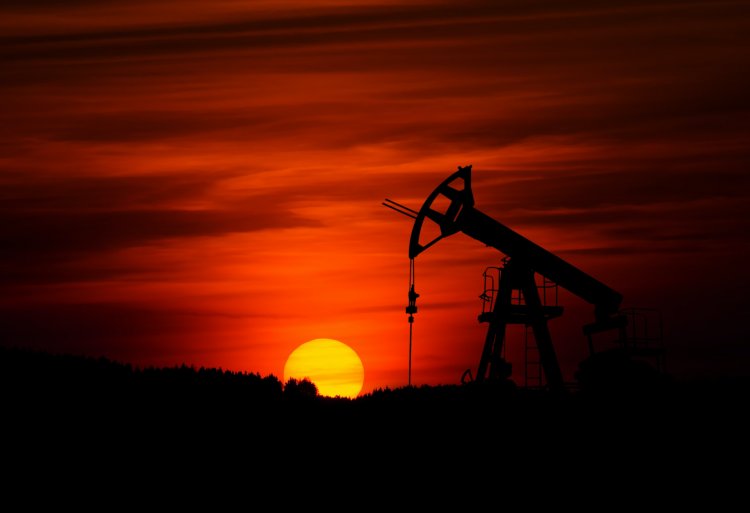If you discover a petroleum spring while drilling a well in the backyard of your old country house, consider yourself well off for life. This product is mostly known as a common type of valuable fuel. However, in addition to gasoline, diesel, kerosene, fuel oil, and other energy products, petroleum is used to make many surprising things.
It is obvious that it is not crude oil that is used, but the products of its refining. For example, the concentrate that remains after distillation – tar – is used in construction and road works. Secondary oil refining involves changing the structure of hydrocarbons, after which a wide range of materials can be obtained. Waste products from oil refining are also used to produce coke for creating electrodes and metallurgical products. Sulfur is also produced during oil refining, and it is used to produce sulfuric acid. Yet there are more interesting examples.
Plastic Products
Plastic production is second only to the production of fuel from petroleum. So, the plastic container you use to eat your lunch at work is also a petroleum product. How does it work? Crude oil is heated in a furnace: the hydrocarbons are separated into groups based on the atoms they contain and the resulting molecular weight. After that the divided hydrocarbons go into a distillation tube. There the heavier substances sink to the bottom and the lighter ones rise to the surface. This is how the oil is separated into different chemicals to be used.
Naphtha is a chemical group that will make plastic appear. This substance looks like gold dust due to the ethane and propene in its composition. They have to be broken down into smaller compounds. One method is called “steam cracking” – high temperature and pressure in an oxygen-free environment. It splits hydrocarbons into shorter molecules called monomers. The next step is polymerization; here, individual monomers are chemically combined into new structures to make polymers, long repeating chains.
Each of these chains will be processed and mixed with various additives – antioxidants, blowing agents, plasticizers, flame retardants. This will divide the resulting plastic for further production purposes.
Food Products
In the early 1960s, the USSR came up with a technology for protein synthesis. Alexander Nesmeyanov, president of the Academy of Sciences of the USSR and rector of Moscow State University, suggested that proteins are obtained from petrochemical production wastes: for example, meat, dairy products, and even artificial caviar. Not only amino acids, the basis of proteins, were synthesized from oil products, but also yeasts, which were later used to produce food proteins, were grown on hydrocarbons. This approach made it 4-5 times cheaper to produce products.
After Nesmeyanov's death, the experiments lost popularity: the production of artificial protein could have had a devastating effect on agriculture. Protein continued to be synthesized, but the products were used to feed cattle. However, the problem of hunger is of global importance, so the interested parties continued to develop and improve the technology. Moreover, today artificial meat is popular among vegetarians and vegans.
The synthesis technology is as follows: paraffin is mixed with chemicals and fungal microflora. In a few hours the microorganisms absorb the paraffin, releasing a non-toxic protein. The product is then dried, filtered and cleaned of impurities and bacterial products. The resulting product is a food mixture with a composition similar to animal meat, but free of taste, color, and smell. It can be given any taste and flavor.
Dyes and preservatives approved for use in the food industry also have a synthetic basis. For example, the E129 dye or the E211 sodium benzoate food preservative.
You can also find oil as food paraffin in chocolates. Vanillin, an artificial substitute for vanilla, which is also made from refined petroleum products, is often added to baked goods.
In the middle of the 20th century, American scientists developed a synthetic fat called olestra, which became a dietary alternative to vegetable and animal fats. Manufacturers began to add it to chips and snack foods. Olestra is made from the mineral oil extracted from petroleum. Due to the special structure of the substance molecules, human digestive enzymes cannot break down this synthetic fat, so it is eliminated from the body almost intact. However, it can settle and accumulate in the intestine, interfering with the absorption of β-carotene and fat-soluble vitamins.
Petroleum polymers are also used to make gum. The gum itself is made from natural ingredients, but its elasticity comes from artificial wax, glycerin, lanolin, and stearic acid. This is why the chewing gum decomposes very slowly.
Clothing and Fabrics
In the fashion industry, almost every synthetic fabric has recycled oil in its composition. Polyester, which is used to make workwear; hollofiber – a filler material for down jackets, pillows, and blankets; acrylic, which is used to knit cozy sweaters; kapron, nylon, elastane, lycra, lavsan, and polyamide – all of these are made with the use of petroleum products. Fabrics that have a “stretch” component in their name also implicitly have petroleum in their composition.
Synthetic materials lead the way in the consumer goods and textile industries, because natural materials are more expensive. In addition to this, fabrics made of petroleum have other advantages:
- wear resistance;
- tear resistance;
- elasticity;
- fabrics do not crease and hold their shape;
- long service life; fabrics do not lose their properties when exposed to external factors;
- lightweight.
Medicinal Products
Oil refining produces substances that are actively used in medicine and pharmacy: Vaseline, Vaseline oil, paraffin, ammonia, chloroform, aromatic hydrocarbons and nitrogenous compounds obtained during oil refining. Phenol, a component of petroleum, is used to make antibiotics, antiseptics, sedatives, antihistamines, anesthetics, and disinfectants. Ethyls and alcohol derived from petroleum are used in the production of antibiotics. Aniligin, which is used in the production of antimicrobials, is made from nitrobenzene. The most popular petroleum-based drug is the well-known aspirin. Read more about petroleum-based medicines in this lecture.
Cosmetic Products
Since petroleum products are cheap and good preservatives, they are used in cosmetology quite often. Unlike many vegetable oils, petroleum products ensure the product preservation, are odorless and easy to work with.
It is important to understand that before they reach the shelves in the form of cosmetics, the substances undergo a careful process of filtration. In the end, a transparent oil, called white (mineral) oil, remains. It is used as:
· Surfactant;
· Preservative;
· Solvent;
· UV filter.
It is used as a plasticizer in creams and decorative cosmetics (mascara and eye shadows). It is also used as a solvent in makeup removers.
List of the most common substances:
· Paraffin;
· C18-70 isoparaffin;
· Cera microcrystallina;
· Petroleum oil;
· White (mineral) oil;
· Microcrystalline wax;
· Ozokerites;
· Ceresin wax;
· Vaseline.
These are not all the areas that use petroleum products. If we think carefully about it, oil is all around us. And science is only expanding these areas, solving the world's problems and replacing the substances missing in nature with synthetic analogs.
The article is based on open sources.
Фото на странице и на главной странице сайта: Zbynek Burival / Фотобанк Unsplash






















